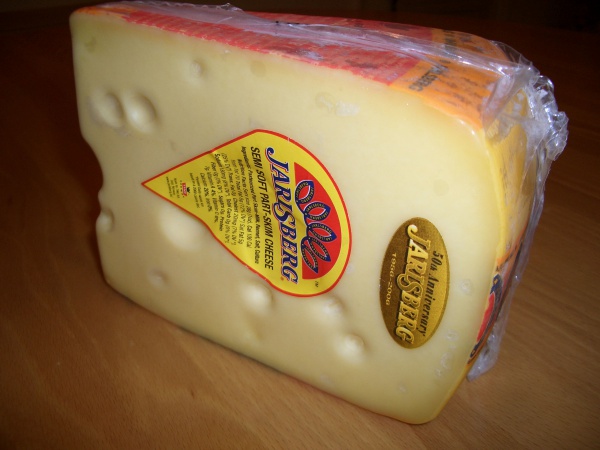Facts About Jarlsberg cheese
Jarlsberg is a delightful, mild cow's milk cheese originating from Norway, though it is also produced under license in Ohio and Ireland. This cheese is easily recognizable by its yellow wax rind and semi-firm, yellow interior. Its flavor is mild and buttery, showcasing a clean, rich, and slightly sweet, nutty taste. Thanks to its versatility, Jarlsberg is perfect for both cooking and snacking. It boasts a smooth, shiny yellow body and a creamy texture that cheese enthusiasts adore.
Jarlsberg undergoes an aging process of at least three months, which contributes to its signature medium to large holes. These holes are created by a unique bacterium called Propionibacterium freudenreichii. Some variations of Jarlsberg are aged even longer for a more intense and developed flavor.
The history of Jarlsberg cheese dates back to the mid-1850s in the village of Våle, Norway, where Anders Larsen Bakke first produced it. The modern version that we enjoy today was developed in 1956 by Ole Martin Ystgaard, who was inspired by the traditional cheese from Vestfold. The name Jarlsberg is derived from Count Wedel Jarlsberg or the county of the same name. The exact production process remains a closely guarded secret.
Jarlsberg is produced by Tine SA, Norway's largest dairy cooperative, which is responsible for about 80% of the country's cheese exports. The cheese made its debut in the United States in 1964 and quickly gained popularity. Today, it is also produced in the U.S. and Ireland and enjoys popularity in regions such as the UK and Australia. In Norway, it is even used as a topping on the best-selling frozen pizza, Grandiosa.
With its significant market presence, Jarlsberg continues to be a beloved cheese around the world. Whether you're planning to cook an elaborate dish or simply seeking a delicious snack, Jarlsberg is sure to delight.

 Finland
Finland